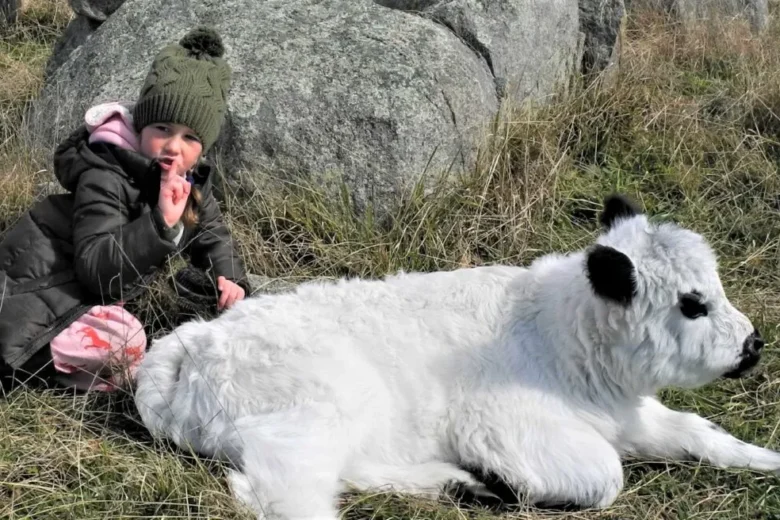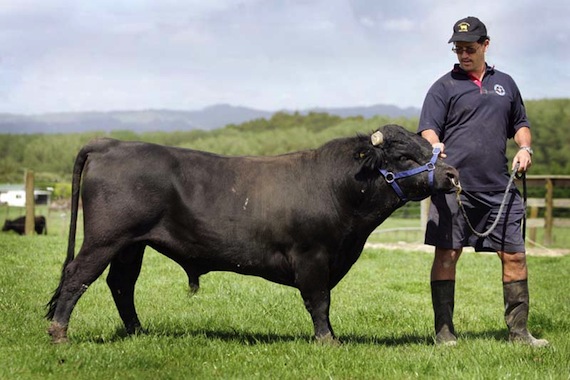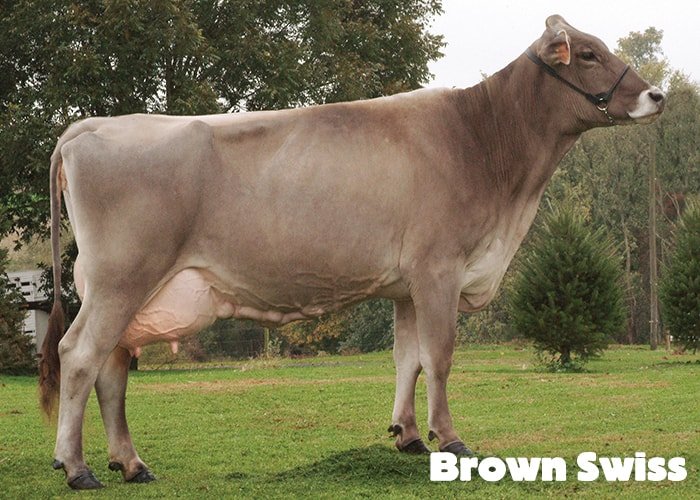If you’ve ever stood in the middle of your barn in the dead of winter, looking at a nearly empty hay stack and wondering if you’ll have enough to last until spring — you’re not alone. Every cattle owner has faced that uneasy moment. Hay costs rise, bales disappear faster than expected, and you start to wonder if your herd is eating more than they need or if you just didn’t calculate right. Truth is, knowing how to calculate your cattle’s hay needs can make the difference between an easy winter and one filled with stress and unnecessary expenses.
When the cold months hit, cattle can’t rely on pasture the way they do in summer. That’s when hay becomes their main energy source — and your biggest feed expense. Many farmers underestimate how much hay they’ll need, while others overestimate and spend more than they should. The trick is finding that sweet spot where your cows stay healthy and your wallet doesn’t suffer. And it all starts with a little math, a bit of planning, and understanding how your herd eats through the season.
Let’s talk about how to calculate your cattle’s hay needs accurately, stretch what you have, and even cut costs this winter without compromising your herd’s nutrition. Whether you’re feeding 5 cows or 50, this guide will walk you through everything — from estimating hay needs to optimizing your cow hay feeder plans for minimal waste.
Understanding How Much Hay a Cow Really Needs
Every cow eats differently depending on its size, age, and stage of production. A simple rule of thumb says a cow needs 2 to 3 percent of her body weight in dry matter per day. So if you’ve got a 1,200-pound cow, she’ll need roughly 24 to 36 pounds of hay daily. But don’t stop there — not all hay is equal. Good-quality hay packs more nutrients per pound, meaning you’ll need less of it than lower-grade hay.
If you’re feeding a mixed herd — say, some pregnant cows, growing calves, and dry cows — you’ll have to adjust your estimates. Lactating cows, for instance, eat more because their energy demands are higher. This is where many first-timers go wrong: they treat all cows the same. A little differentiation can save you a lot of money by preventing overfeeding or underfeeding.
Step-by-Step: How to Calculate Hay Needs for the Winter
Here’s a simple way to calculate:
Determine Average Cow Weight
Estimate your herd’s average weight. For beef cows, that’s typically between 1,000 and 1,400 pounds.Multiply by Daily Intake Percentage
Multiply weight by 2.5% (0.025) to find daily hay needs.
Example: 1,200 × 0.025 = 30 pounds of hay per cow daily.Multiply by Days in Feeding Period
If your feeding season lasts 120 days, that’s 30 × 120 = 3,600 pounds of hay per cow.Add a 15% Waste Factor
Not all hay makes it into your cow’s stomach. Some gets trampled or spoiled. Add 15% to your total to cover that.
3,600 × 1.15 = 4,140 pounds per cow for the winter.
So, for a herd of 10 cows, you’ll need around 41,400 pounds of hay, or roughly 21 tons. It’s better to round up slightly — running out midwinter isn’t fun.
Using a Hay Calculator (and Why You Should)
If math isn’t your thing, don’t worry. Many free online hay calculators can do this for you. You just plug in your herd size, weight, and feeding duration. But even with a calculator, it’s important to understand what those numbers mean — they’re estimates, not guarantees. Weather changes, cow condition, and hay quality all affect how much feed your cattle will actually consume.
Reducing Hay Waste with Better Feeding Methods
You’d be surprised how much hay your cows waste if you’re not careful. Studies show up to 45% of hay can be wasted with poor feeding setups. That’s where cow hay feeder plans come in handy. Using a properly designed hay feeder can make a massive difference.
Feeders that keep hay off the ground — like cone or ring feeders — help reduce waste and contamination. You can even build your own with simple cow hay feeder plans using metal panels or repurposed wood. The key is to keep the hay elevated, dry, and accessible from all sides without letting cows trample it.
Some farmers also unroll bales daily instead of all at once. That way, cows eat what they need and don’t soil the rest. It’s small changes like this that stretch your hay and cut down on costs.
How to Store Hay Properly for Winter
Hay storage can make or break your winter feed plan. Even if you’ve calculated perfectly, poor storage can spoil your efforts — literally. Always store bales on pallets or gravel to prevent moisture from creeping up. Cover them with a tarp or store inside a barn to reduce weather damage.
If you’re buying hay, inspect bales for mold, dampness, or unusual smells. Moldy hay can cause respiratory problems in cattle and reduce feed intake. Don’t be tempted by cheap hay that’s gone bad — it’s never worth the savings.
Cutting Costs Without Cutting Nutrition
Saving money doesn’t mean compromising your herd’s diet. Here’s how smart cattle owners stretch their hay budget:
Test your hay quality. Know its protein and fiber levels so you can supplement only when needed.
Use feed additives like molasses or mineral blocks to enhance low-quality hay.
Rotate feeding areas to reduce trampling and manure build-up.
Mix hay types. Combine alfalfa and grass hay for balanced nutrition at lower cost.
The more you understand what your cattle are eating, the less you waste and the healthier they’ll stay all winter long.
Real-Life Example: The Year We Almost Ran Out of Hay
A few winters ago, I miscalculated our hay supply by about two weeks. Snow came early, and my cows were burning through feed faster than expected. By mid-January, I was scrambling to find extra bales at a decent price. The nearest farm had some, but they were half moldy. Lesson learned? Always overestimate by at least 10%. It’s a simple safety buffer that can save your sanity when winter doesn’t go as planned.
FAQ: Common Questions About Cattle Hay Feeding
How much hay should a cow eat per day?
Most cows need about 2.5% of their body weight daily. A 1,200-pound cow eats roughly 30 pounds of hay a day.
Can cows eat hay that’s been rained on?
If it’s been thoroughly dried again and isn’t moldy, yes. But wet, musty hay can cause digestive issues.
Should I feed hay once or twice a day?
Twice a day helps reduce waste and keeps cows more active and satisfied.
What’s the best feeder to reduce hay loss?
Cone-style or ring feeders with solid bottoms work best. DIY cow hay feeder plans can save money and work just as well as store-bought ones.
How can I tell if I’m feeding too much?
If cows are leaving hay behind regularly, reduce slightly and observe. Consistent leftovers mean overfeeding.
How-To: Build a Simple Cow Hay Feeder (On a Budget)
Gather materials: A few steel panels, welded wire, and bolts.
Form a ring shape about 8 feet wide and 4 feet high.
Add a base: Use a solid metal or wood frame to keep hay off the ground.
Secure and test: Make sure it’s sturdy enough to handle pushing and rubbing.
This setup costs a fraction of a store-bought feeder and can last several winters if maintained.
Final Thoughts: Feed Smart, Save Smart
Calculating your cattle’s hay needs isn’t about making things complicated. It’s about being intentional — knowing what your herd needs, preventing waste, and making your resources last. The peace of mind that comes from seeing your hay barn full, knowing you’ve planned right, is worth every minute of prep.
Every winter is different. Weather, cow condition, and hay prices all play a part. But if you keep learning and adjusting, you’ll find your rhythm. So, how do you plan to manage your cattle’s hay this winter — and are you ready to stretch your supply further than last year?



